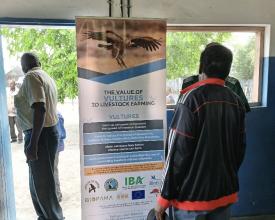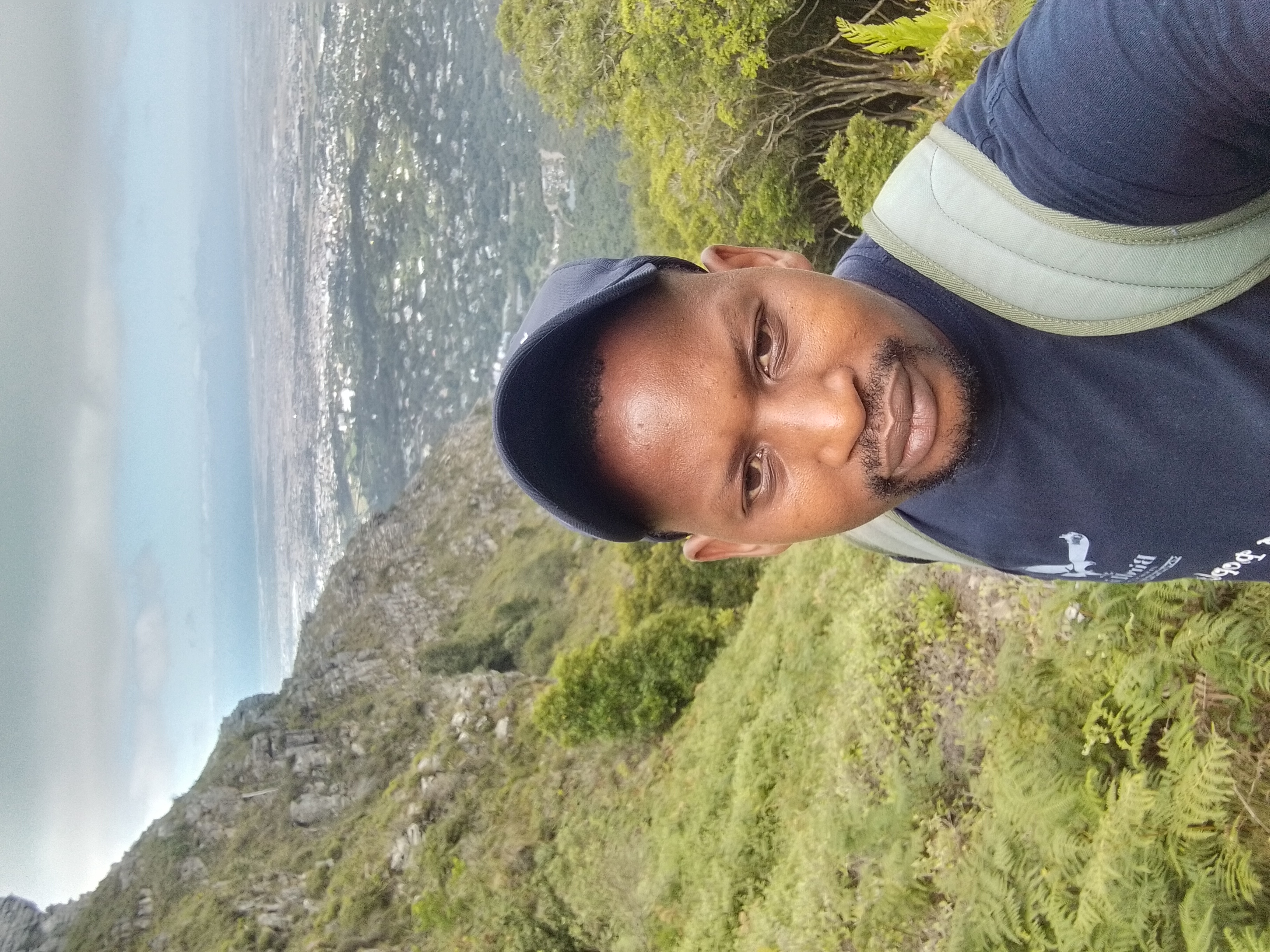
Local communities drive vulture conservation initiative across the Kavango-Zambezi Transfrontier Conservation Area: a success story of Zimbabwe, Botswana, and Zambia

The Kavango-Zambezi Trans-frontier Conservation Area’s (KAZA TFCA) expanse of 520 000 km2 lies in the Kavango and Zambezi River basins where Angola, Botswana, Namibia, Zambia and Zimbabwe converge encompassing sixteen National Parks. In these areas, local communities are getting into conflict with species such as elephants and hippos which results in the death of the animals through the use of poison, leading to the death of various scavenging species such as vultures through unintentional and international poisoning. Through transboundary collaborations, the solution focused on improved vulture conservation through the active participation of local communities in and around the three protected areas of the KAZA TFCA area while increasing awareness and capacity building on vulture conservation.These enabled the formation of Vulture Support groups mandated to champion vulture conservation in their respective areas.
Contexto
Défis à relever
The work implemented was aimed at reducing poison-related vulture deaths across three African poisonings ‘hotspot’ countries, Zimbabwe Botswana and Zambia which are part of the KAZA TFCA. Local communities were getting into conflict with species such as elephants and hippos which resulted in the death of these animals by use of poison, thus leading to the death of various scavenging species such as vultures that will feed on those carcasses. Across Africa, poisoning contributes to 64% of vulture death, and six out of 11 species in African being threatened with extinction.
Ubicación
Procesar
Summary of the process
The first building block “Building relation with local actions” permitted the implementer to gain the trust of the local communities allowing the community to discuss sensitive information and work together. The second block “Capacity building of local actors” focuses on engaging the community members through providing training and support for skills such as monitoring, data collection, and conflict resolution. In addition, it focused on involving communities in decision-making processes, providing opportunities for participation in conservation activities, and recognizing the contributions of local communities to conservation efforts thereby building support and ownership for vulture conservation initiatives. The third block “Partnerships between key local actors and multi-sectorial collaborations” and the fourth block “Effective communication” imply effective coordinated mechanisms between communities and various stakeholders, including government agencies, conservation organizations, scientists, and local communities ensured that vulture poisoning incidents are detected and reported quickly while communicating with all stakeholders across different levels.
Building Blocks
Building relations and trust with local actors
Issues of poisoning are sometimes sensitive and people might be reluctant to share much-needed information. To gain their trust, the implementer approached the local government authority and signed a Memorandum of Understanding which enables us to work in the area. Another engagement meeting was done with the local leadership (chiefs, headman) to discuss our intention in the area as a conservation organization. These steps increased our transparency as an honest organization. Building on these strong relations and trust with local communities is essential to ensure that they share such information.
Enabling factors
Time and the human capacity for repeated visits to spend time in the communities to build long-standing relationships of trust over time were enabling factors.
Lesson learned
Long-term investments with communities are needed, taking into recognition that they have different cultural and social issues happening in the communities. Effective communication is essential to build the trust of the local communities.
Capacity building of local actors & stakeholders
Communities and local stakeholders living adjacent to the protected areas were not aware of the importance of vultures. The capacity building involved raising awareness among communities on the value of vultures, the threats they face and their need for conservation. Repeated face-to-face formal meetings, informal meetings, and engaging the community in each step enabled the achievement of the results.
Enabling factors
- This is achieved through continuously holding engagement meetings and workshops with the local communities. Communication material that addressed the challenges and gave solutions was shared. The already-built trust and use of the local language enabled the message to be received positively.
Lesson learned
- Sharing and uptake of knowledge to see the positive results takes time, but persistence is the key to taking into recognising the local leadership and authority. Communities are always receptive to new ideas only if you have capacitated them enough.
Partnerships between key local actors and multi-sectorial, transboundary collaborations
The achieved results relied heavily on the collaboration and cooperation partnerships among various stakeholders, including government agencies, conservation organizations, scientists, and local communities. Collaboration with the Ministries/Government departments was key in sensitizing the communities on issues around human-wildlife conflict and suggested environmentally friendly ways to mitigate the conflict. The scientists were there to collect information related to wildlife poisoning and give feedback to the government ministries. The communities were the key stakeholder since they are the sole custodians of the environment.
Enabling factors
The implementers connected with local communities was that we were already working with communities on some other projects, so this enabled our relations to be strengthened. By involving communities in decision-making, they were able to identify some stakeholders with whom we collaborated to share skills, knowledge, and experiences resulting in the project's success. The transboundary collaboration enabled the implementers to focus on tackling vulture poisoning across three countries separately but fighting for the same cause.
Lesson learned
Partnering with other organizations trying to achieve the same goal makes the implementation of project results much easier and quicker without a scenario of duplicating the work on the ground. Ideas and possible solutions to a problem can be freely shared resulting in problems being addressed holistically.
Effective communication
An excellent communication plan/network with different stakeholders was initiated across different levels. From the inception of the project, the community and other stakeholders were constantly capacitated on how the project is going. A relay of relevant vulture conservation and policy issues was achieved to the target stakeholders within the communities and KAZA TFCA.
Enabling factors
Through strong relations established, the project implementers were flexible to engage with different stakeholders at different levels. This would include the arrangement of informal meetings and the use of local language to target different audiences. Social media, distribution of communication material and the power of face-to-face meetings enabled the implementer to reach grassroots levels.
Lesson learned
Take advantage of social media platforms and share your story and journey with the whole world.
Face-to-face meetings are a powerful tool for effective communication and enable the project implementers to relay the relevant vulture conservation and policy issues to the target stakeholders within the KAZA TFCA.
Impacts
- Improved vulture conservation through active participation of local communities in and around the three protected areas of the KAZA TFCA - Establishment of one Wildlife Volunteer Group in Botswana, One Vulture Support Group in Zambia; Three Vulture Support Groups in Zimbabwe and strengthening of the three existing Vulture Support.
- Successful gender responsive in vulture conservation across the target protected areas in KAZA TFCA – with a 45% increase in women and youth participation in vulture conservation initiatives across the three countries.
- Reduced human/wildlife and human-bird conflict in the implemented areas.
- Enhanced citizen science contributes essential conservation data that is helping protected area management.
- Reduced wildlife poisoning incidents in and around the three protected areas of the KAZA.
- Strengthening transboundary relations amongst the implementing partners.
- Empowerment of local communities to tackle vulture and wildlife poisoning as well as increased their local technical capacity to holistically address human-wildlife conflict.
- Wide awareness and capacity building on vulture conservation informed local and policy decisions on biodiversity conservation and sustainable natural resources management.
Beneficiaries
- Direct beneficiaries – local communities people, protected area authorities, vultures.
- Indirect beneficiaries – Tourism agencies, businesses, law enforcement agencies, civil societies, local governance, and various government ministries.























